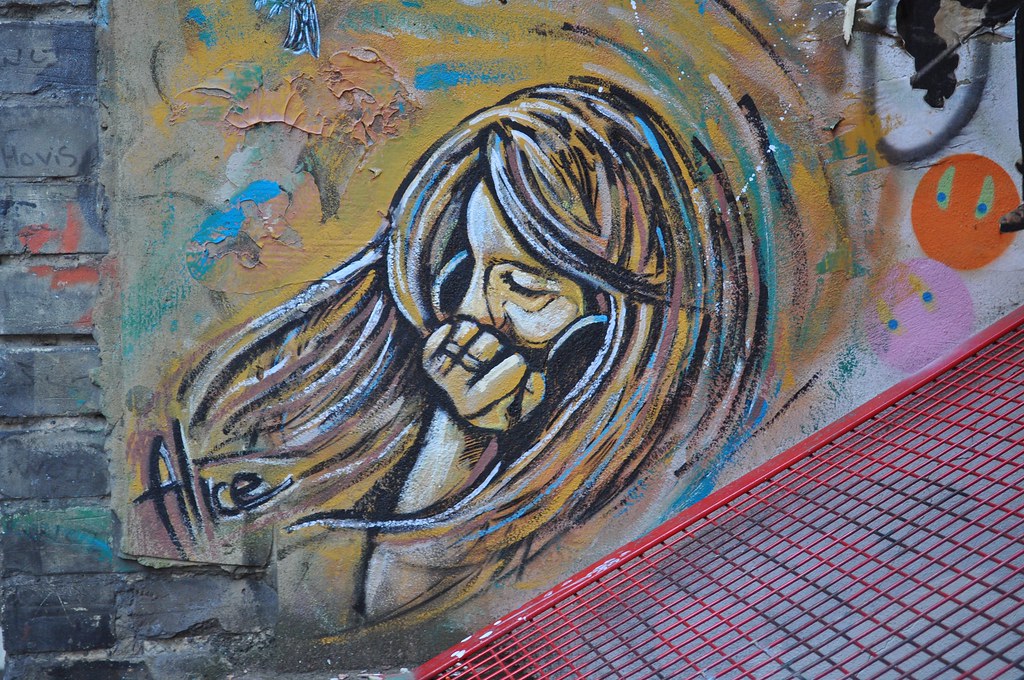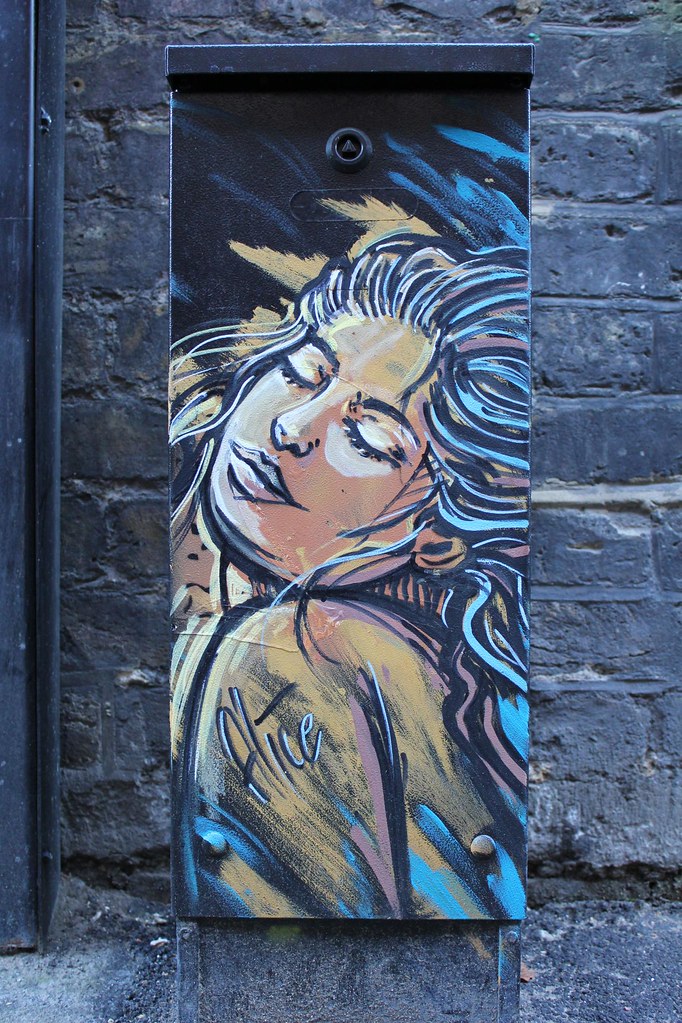Born in Rome, Alice Pasquini, a.k.a. AliCè, has recently been using London’s streets to ignite conversations about creativity. She paints with rich colours, using the walls to express her true artistic ideas that can be stiffled in a more professional environment.
AliCè gives Street Art London a bit of insight into her inspiration, talks about the value of street art in communicating new ideas, and gives us a heads up about her graphic novel to be released next month. The three pieces featured in this interview may be found in Blackhall Street, Shoreditch. Go check them out!

Your street art focuses on representations of women. What is your inspiration behind this choice of subject?
I am interested in female models different from street art cliche. I am often annoyed by female stereotypes proposed by artists where women are seen as sexual objects or cartoon heroines. I am seduced instead by real women, strong and independent women. In general, I am interested in the representation of human feelings.
Where and when did you create your first piece of street art and what was it?
In 2006, in Rome. My first piece of street art was a girl seen from up above.

Why do you think street art is important and what message are you hoping to communicate by creating art in public spaces?
I think the artist primarily tries to express herself and doesn’t necessarily know what she wants to communicate. The meaning and the value comes from the exchange between the artist and the viewer. This exchange happens on the street in a more unexpected, surprising and freer way than in a gallery.
Strong brushstrokes and illustration styles dominate your portfolio. Tell us a bit about your artistic approach.
I am a multimedia artist. My artistic background is academic. I studied Fine Arts. I specialized in old style animation and I worked as an illustrator and set designer. It is sometimes frustrating for an artist to work for very opinionated clients. Therefore, in the last few years I have embraced street art as a way to totally express myself.

Which piece are you most proud of and what does it mean to you?
There is a wall painting I am specially proud of. I painted it in Bassano del Grappa (north of Italy) last September at the Infart Festival. I like it because there is a very good integration there between the landscape and the painting. Moreover, I worked with C215 and that collaboration worked really well.
You’ve put work up in cities all over the world. Is there something specific about London that inspires you while you’re here?
In 2000, I did one year of Fine Arts in London. It was there that I exhibited for the first time. Therefore London is a very special place for me. What I really liked about London, and I still do, is its openness towards new artistic movements and its lack of prejudices compared to Italy.
Is there a certain public wall or space that you would love to use as a canvas?
Buckingham Palace

Which other street artists inspire you?
C215, Sten & Lex
What have you got lined up for 2011? Should we keep our eyes peeled on London’s streets?
On the 1st of February 2011 my graphic novel Come i fiori di carta will be released. In the book there are also photos of street works inspired by the main female characters of the story. After that, I will keep on traveling and painting. Keep your eyes open!
Interview by Stephanie Sadler for Street Art London.

brilliant!
there cool so put it on canvas and i would bye it
well I prefer more fautrigive stuff personally but I can paint in any given style. I think these are good examples of their kind but, their main success is derived from their interior decorative value. vis: house wall decorations. This I admit I dont seem to achieve, mine are stand alone’ specimins perhaps.Two ingredients seem to make for artistic success, One is interior decoration value, the other investment value, outside of those categories you are going to at least have a big struggle.